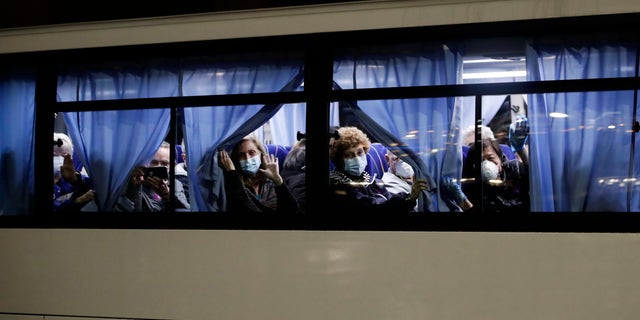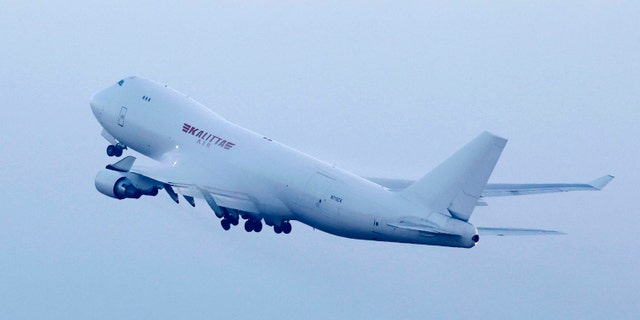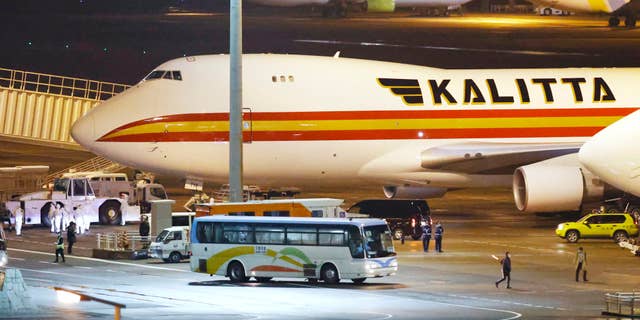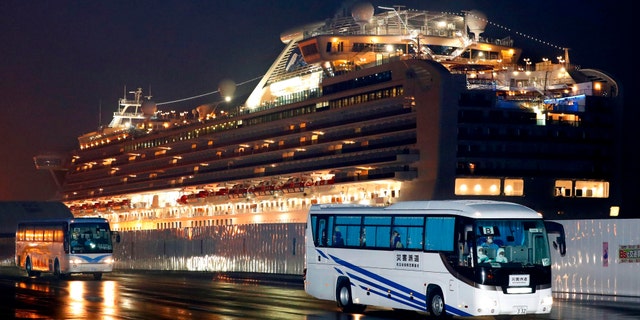Let’s start with Operation Ajax.
It was 1953. The United States, working with British intelligence, overthrew democratically-elected Iranian Prime Minister Mohammad Mosaddegh in favor of Mohammad Reza Pahlavi, the “Shah of Iran.”
The CIA-engineered coupe d’état marked the first time the U.S. used covert means to undercut the leadership of another country. U.S. intelligence services dubbed the mission “Operation Ajax.”
It should surprise no one that the American encroachment had a lot to do with oil.
Toppling Pahlavi came back to bite the U.S. during the 1979 Revolution in Iran. Iranians ran the Shah off, seized the U.S. Embassy in Tehran and took 52 Americans hostage for 444 days. Things haven’t gone well for the U.S. with Iran since.
The expression “the enemy of my enemy is my friend” comes to mind as the U.S. backed Iraq in a lengthy war it waged with Iran in the 1980s. The U.S. and other western nations sent significant monetary support to Baghdad to fuel the fight against Iran. The west also dispatched guns, helicopters and missiles. U.S. intelligence services helped bolster Iraq track Iranian troops.
President Reagan boasted that the U.S. “would do whatever was necessary to prevent Iraq from losing” to Iran.
Tensions between the U.S. and Iran escalated in 1987 and 1988. The U.S. began reflagging Kuwaiti tankers navigating the Persian Gulf and Straits of Hormuz. The U.S. Navy escorted the ships to protect them from attacks by Iranian forces. The U.S. skirmished with the Iranian military on several occasions – leading to the deployment of the U.S.S. Vincennes in the spring of 1988. That July, the Vincennes mistook the flight of a passenger jet for an Iranian F-14 Tomcat. As a result, the Vincennes fired two missiles at the airliner, killing nearly 300 passengers and crew on board.
The U.S. has been involved in formal wars in the Persian Gulf and nearby neighborhoods since 1991. It started with Congressional authorization for the Gulf War. Congress approved a broader “Authorization for Use of Military Force” (AUMF) in 2001, shortly after 9/11. That measure greenlighted the deployment of U.S. military personnel to Afghanistan and elsewhere to wage “the war on terror.” Then came a 2002 Congressional blessing for the 2003 war in Iraq. The U.S. is still fighting in Iraq and Afghanistan – and all over the world - as a result of the 2001 and 2002 AUMFs. But Congress has never specifically authorized any attack against Iran. Things got murkier earlier this winter when President Trump ordered a strike to kill Iranian General Qassem Soleimani – in Iraq.
Sen. Tim Kaine, D-Va., has tried for years to revamp the 2001 and 2002 authorizations which the administrations of Presidents George W. Bush, Barack Obama and Donald Trump used to rationalize military intervention in a host of locales. Kaine and lawmakers from both parties contend the old authorizations are outmoded. Concern about the calcified authorizations grew after Trump called in the Soleimani strike. After that operation, Sen. Mike Lee, R-Utah, trashed the administration for delivering what he characterized as the “worst” briefing he’d witnessed since coming to Washington.
“They were in the process of telling us that we need to be good little boys and girls and run along and not debate this in public,” excoriated Lee. “I find that absolutely insane. I think it’s unacceptable.”
Lee pressed Trump Administration officials for what they would see as a circumstance where they would have to ask Congress for a war declaration or an AUMF for Iran.
“’I’m sure we can think of something,’” one of the briefers told inquisitive lawmakers, according to Lee.
Over time, various administration officials and President Trump said the U.S. was justified in killing Soleimani because he posed an imminent threat. Late last week, House Foreign Affairs Committee Chairman Eliot Engel, D-N.Y., blasted the administration for sending a report to Congress accounting for the legal justifications for knocking off Soleimani. But Engel said “the administration’s explanation in this report makes no mention of any imminent threat.” Engel called the Trump Administration’s accounting of the episode “spurious” and asked Secretary of State Mike Pompeo to testify on Feb. 28 “about war powers.”
As this unfolded, Kaine and others prepared a war powers resolution regarding Iran. Kaine’s measure would specifically limit potential U.S. military engagement in Iran to a month – unless Congress expressly signs off on additional fighting. The Senate approved the package late last week 55-45. All 47 Senate Democrats voted aye, joined by eight GOP senators: Sens. Susan Collins, R-Maine, Rand Paul, R-Ky., Jerry Moran, R-Kan., Lisa Murkowski, R-Ark., Bill Cassidy, R-La., Todd Young, R-Ind., Lamar Alexander, R-Tenn., and Lee.
“Clearly the resolution is not ready for prime time,” chastised Senate Majority Leader Mitch McConnell, R-Ky., describing it as “deeply flawed on a number of levels.”
Sen. Marco Rubio, R-Fla., said proponents of Kaine’s plan hoped to curb a war scenario with Iran. But Rubio believed adoption of the measure “potentially increases the chances of war.”
Rubio said he didn’t question the motives of Kaine and other senators who supported the resolution.
“The problem is that their intentions and how this will be perceived,” said Rubio. He said that Iran would interpret the resolution as hemming in President Trump at a time of anxiety in the region. Florida’s senior senator worried about the Senate undercutting the chief executive.
Still, the Senate adopted Kaine’s resolution, which some characterized as a bipartisan rebuke of the president. The measure now goes to the House. Lawmakers there likely will approve the package as well.
“Congress has a role to play,” said House Speaker Nancy Pelosi, D-Calif., when it comes to war and peace. “We want to do it in a way that does not eliminate the power of declaring war from the Congress of the United States.”
But neither the House nor Senate have two-thirds to override a potential veto by the president.
Even so, supporters of the plan note that President Trump has said repeatedly he wants to end U.S. involvement in “endless wars.”
Shortly after the Senate closed the war powers vote, Senate Minority Leader Chuck Schumer, D-N.Y., said the resolution showed that “no president can sidestep Congress.” He added that presidents “cannot plunge the United States into an endless conflict in the Middle East.”
The U.S. is technically not engaged in hostilities with Iran. But the United States and Iran have waged a sort of “cold” war against one another since Operation Ajax. By the same token, the U.S. has fought in the Middle East, Iraq and Afghanistan for decades. It’s unfurled Congressional justifications for doing so which date back years. The circumvention of Congress continues. And, despite the vote, presidents can still plunge “the United States into an endless conflict in the Middle East.” The U.S. is already there. Things aren’t changing any time soon.
This is ironic. At the Constitutional Convention in Philadelphia in 1787, the Founders ultimately decided to award the power “to declare war” to Congress. The thinking was that it should be hard to get into war – but easier to make peace.
But here, the opposite appears to be true.
It was 1953. The United States, working with British intelligence, overthrew democratically-elected Iranian Prime Minister Mohammad Mosaddegh in favor of Mohammad Reza Pahlavi, the “Shah of Iran.”
The CIA-engineered coupe d’état marked the first time the U.S. used covert means to undercut the leadership of another country. U.S. intelligence services dubbed the mission “Operation Ajax.”
It should surprise no one that the American encroachment had a lot to do with oil.
Toppling Pahlavi came back to bite the U.S. during the 1979 Revolution in Iran. Iranians ran the Shah off, seized the U.S. Embassy in Tehran and took 52 Americans hostage for 444 days. Things haven’t gone well for the U.S. with Iran since.
The expression “the enemy of my enemy is my friend” comes to mind as the U.S. backed Iraq in a lengthy war it waged with Iran in the 1980s. The U.S. and other western nations sent significant monetary support to Baghdad to fuel the fight against Iran. The west also dispatched guns, helicopters and missiles. U.S. intelligence services helped bolster Iraq track Iranian troops.
President Reagan boasted that the U.S. “would do whatever was necessary to prevent Iraq from losing” to Iran.
Tensions between the U.S. and Iran escalated in 1987 and 1988. The U.S. began reflagging Kuwaiti tankers navigating the Persian Gulf and Straits of Hormuz. The U.S. Navy escorted the ships to protect them from attacks by Iranian forces. The U.S. skirmished with the Iranian military on several occasions – leading to the deployment of the U.S.S. Vincennes in the spring of 1988. That July, the Vincennes mistook the flight of a passenger jet for an Iranian F-14 Tomcat. As a result, the Vincennes fired two missiles at the airliner, killing nearly 300 passengers and crew on board.
The U.S. has been involved in formal wars in the Persian Gulf and nearby neighborhoods since 1991. It started with Congressional authorization for the Gulf War. Congress approved a broader “Authorization for Use of Military Force” (AUMF) in 2001, shortly after 9/11. That measure greenlighted the deployment of U.S. military personnel to Afghanistan and elsewhere to wage “the war on terror.” Then came a 2002 Congressional blessing for the 2003 war in Iraq. The U.S. is still fighting in Iraq and Afghanistan – and all over the world - as a result of the 2001 and 2002 AUMFs. But Congress has never specifically authorized any attack against Iran. Things got murkier earlier this winter when President Trump ordered a strike to kill Iranian General Qassem Soleimani – in Iraq.
Sen. Tim Kaine, D-Va., has tried for years to revamp the 2001 and 2002 authorizations which the administrations of Presidents George W. Bush, Barack Obama and Donald Trump used to rationalize military intervention in a host of locales. Kaine and lawmakers from both parties contend the old authorizations are outmoded. Concern about the calcified authorizations grew after Trump called in the Soleimani strike. After that operation, Sen. Mike Lee, R-Utah, trashed the administration for delivering what he characterized as the “worst” briefing he’d witnessed since coming to Washington.
“They were in the process of telling us that we need to be good little boys and girls and run along and not debate this in public,” excoriated Lee. “I find that absolutely insane. I think it’s unacceptable.”
Lee pressed Trump Administration officials for what they would see as a circumstance where they would have to ask Congress for a war declaration or an AUMF for Iran.
“’I’m sure we can think of something,’” one of the briefers told inquisitive lawmakers, according to Lee.
Over time, various administration officials and President Trump said the U.S. was justified in killing Soleimani because he posed an imminent threat. Late last week, House Foreign Affairs Committee Chairman Eliot Engel, D-N.Y., blasted the administration for sending a report to Congress accounting for the legal justifications for knocking off Soleimani. But Engel said “the administration’s explanation in this report makes no mention of any imminent threat.” Engel called the Trump Administration’s accounting of the episode “spurious” and asked Secretary of State Mike Pompeo to testify on Feb. 28 “about war powers.”
As this unfolded, Kaine and others prepared a war powers resolution regarding Iran. Kaine’s measure would specifically limit potential U.S. military engagement in Iran to a month – unless Congress expressly signs off on additional fighting. The Senate approved the package late last week 55-45. All 47 Senate Democrats voted aye, joined by eight GOP senators: Sens. Susan Collins, R-Maine, Rand Paul, R-Ky., Jerry Moran, R-Kan., Lisa Murkowski, R-Ark., Bill Cassidy, R-La., Todd Young, R-Ind., Lamar Alexander, R-Tenn., and Lee.
“Clearly the resolution is not ready for prime time,” chastised Senate Majority Leader Mitch McConnell, R-Ky., describing it as “deeply flawed on a number of levels.”
Sen. Marco Rubio, R-Fla., said proponents of Kaine’s plan hoped to curb a war scenario with Iran. But Rubio believed adoption of the measure “potentially increases the chances of war.”
Rubio said he didn’t question the motives of Kaine and other senators who supported the resolution.
“The problem is that their intentions and how this will be perceived,” said Rubio. He said that Iran would interpret the resolution as hemming in President Trump at a time of anxiety in the region. Florida’s senior senator worried about the Senate undercutting the chief executive.
Still, the Senate adopted Kaine’s resolution, which some characterized as a bipartisan rebuke of the president. The measure now goes to the House. Lawmakers there likely will approve the package as well.
“Congress has a role to play,” said House Speaker Nancy Pelosi, D-Calif., when it comes to war and peace. “We want to do it in a way that does not eliminate the power of declaring war from the Congress of the United States.”
But neither the House nor Senate have two-thirds to override a potential veto by the president.
Even so, supporters of the plan note that President Trump has said repeatedly he wants to end U.S. involvement in “endless wars.”
Shortly after the Senate closed the war powers vote, Senate Minority Leader Chuck Schumer, D-N.Y., said the resolution showed that “no president can sidestep Congress.” He added that presidents “cannot plunge the United States into an endless conflict in the Middle East.”
The U.S. is technically not engaged in hostilities with Iran. But the United States and Iran have waged a sort of “cold” war against one another since Operation Ajax. By the same token, the U.S. has fought in the Middle East, Iraq and Afghanistan for decades. It’s unfurled Congressional justifications for doing so which date back years. The circumvention of Congress continues. And, despite the vote, presidents can still plunge “the United States into an endless conflict in the Middle East.” The U.S. is already there. Things aren’t changing any time soon.
This is ironic. At the Constitutional Convention in Philadelphia in 1787, the Founders ultimately decided to award the power “to declare war” to Congress. The thinking was that it should be hard to get into war – but easier to make peace.
But here, the opposite appears to be true.





























